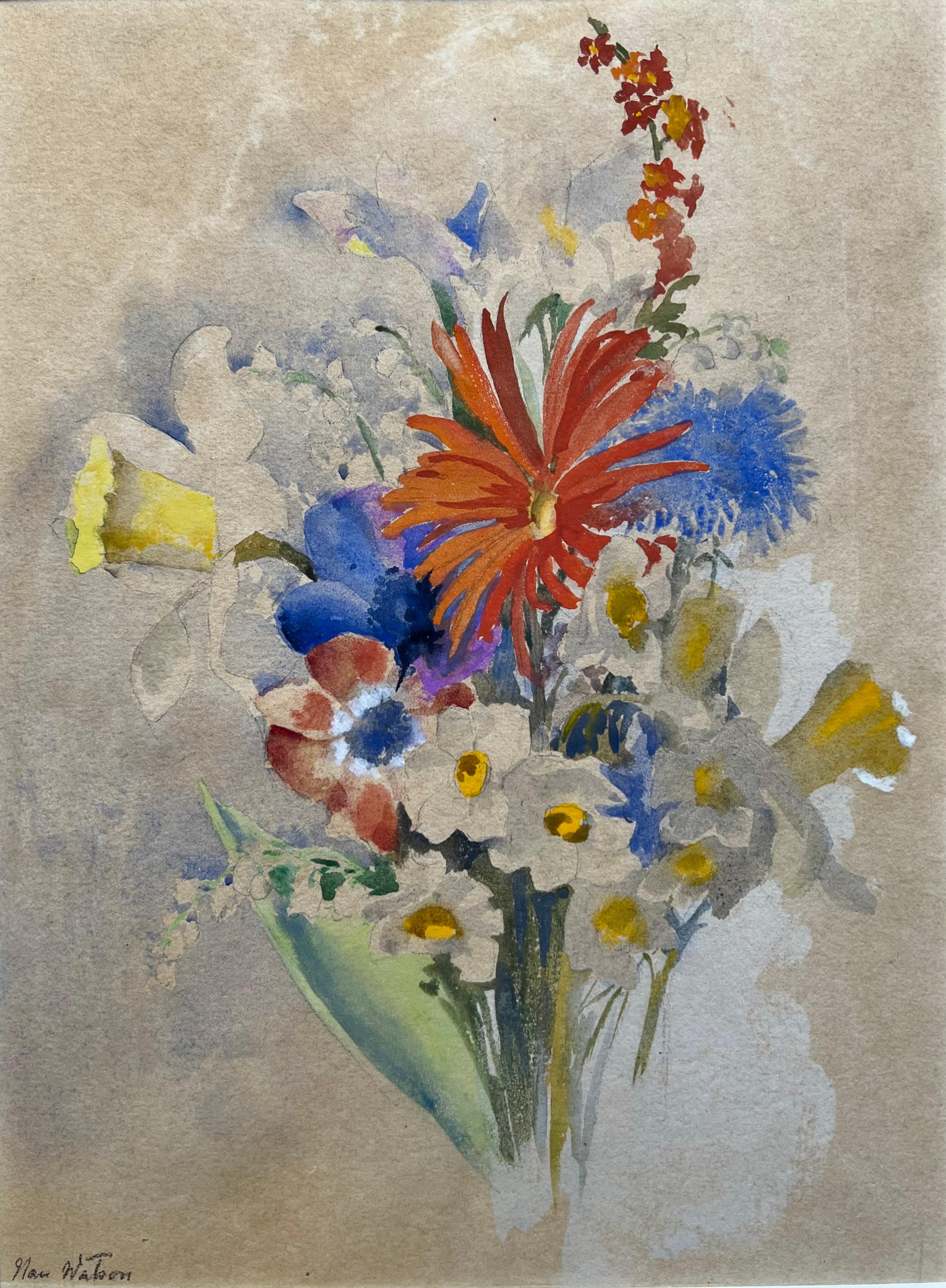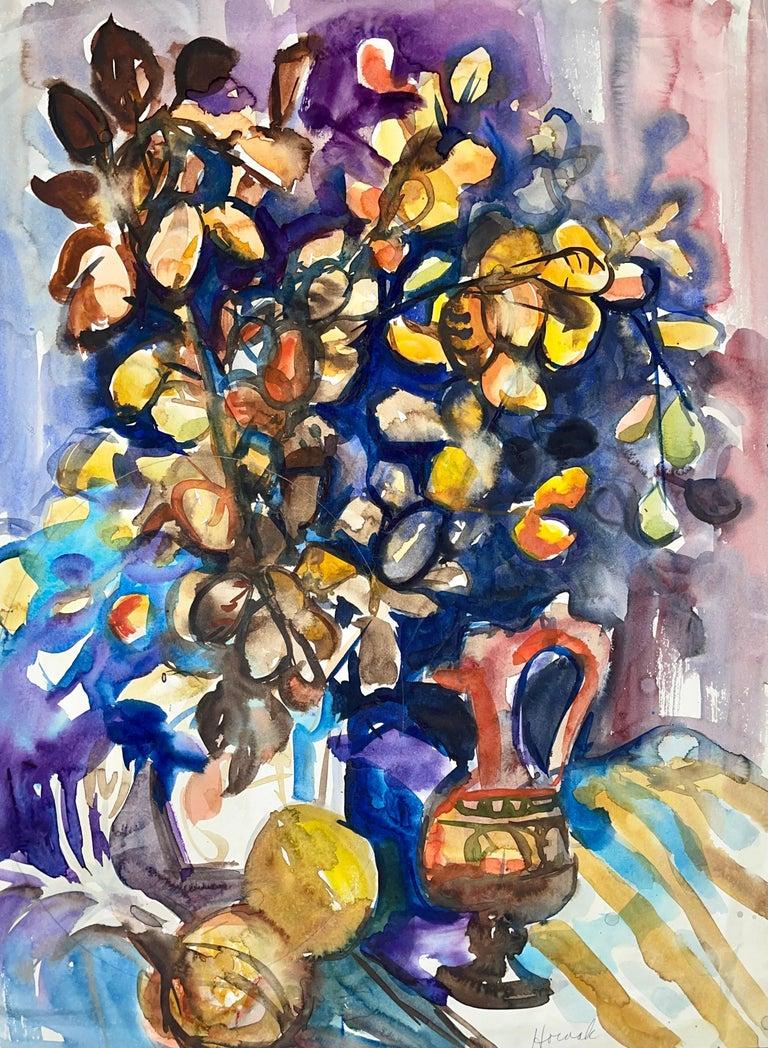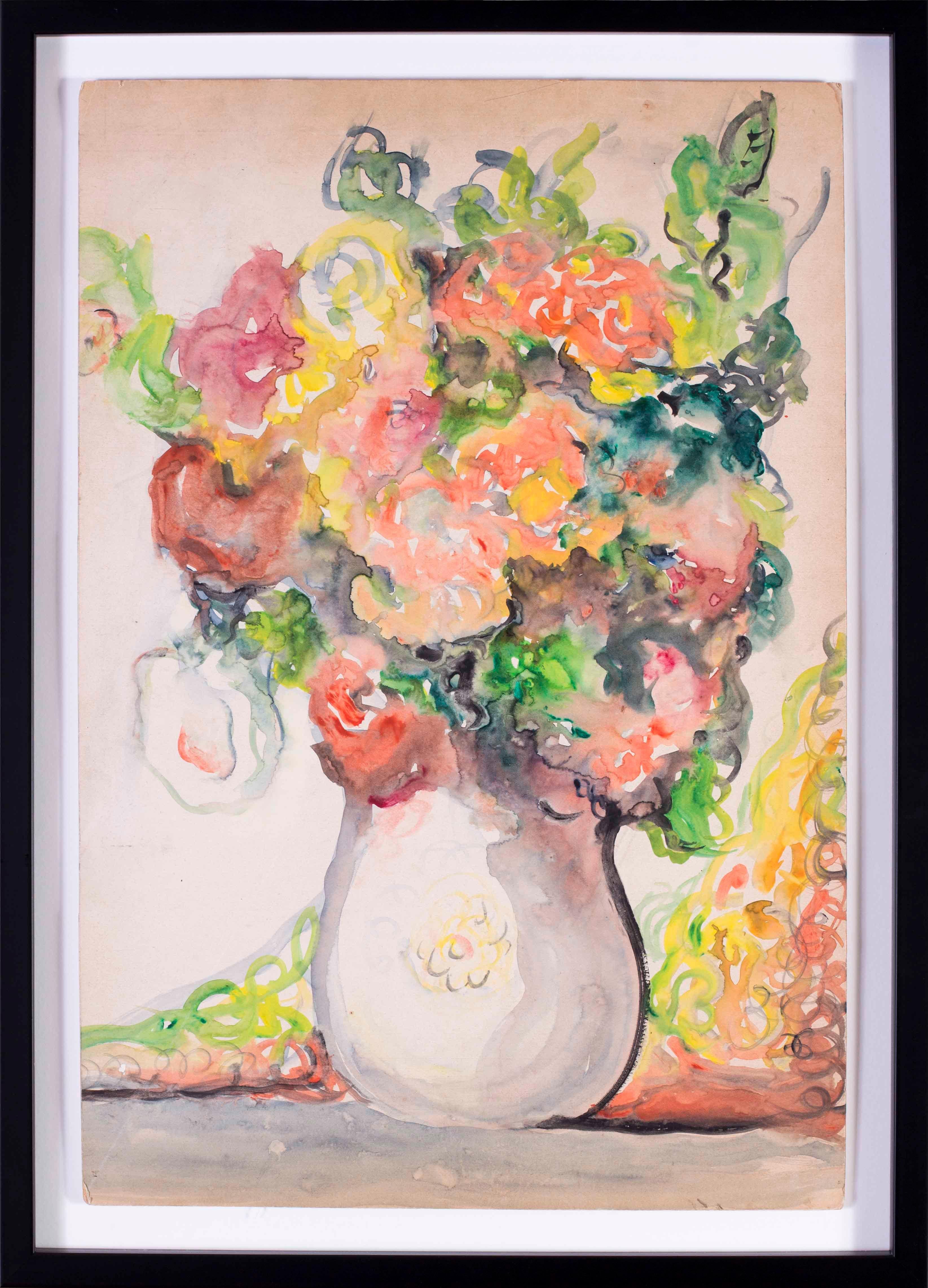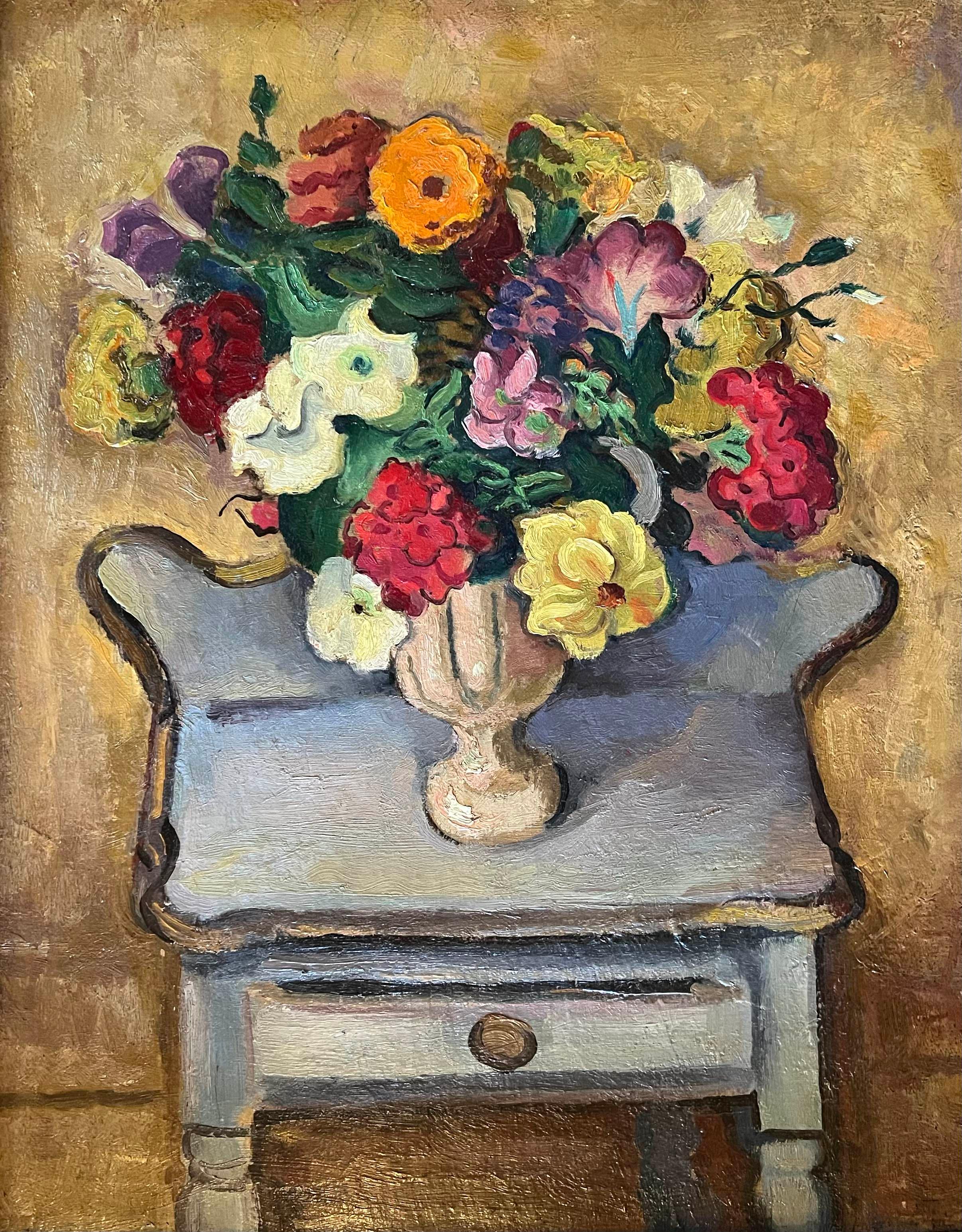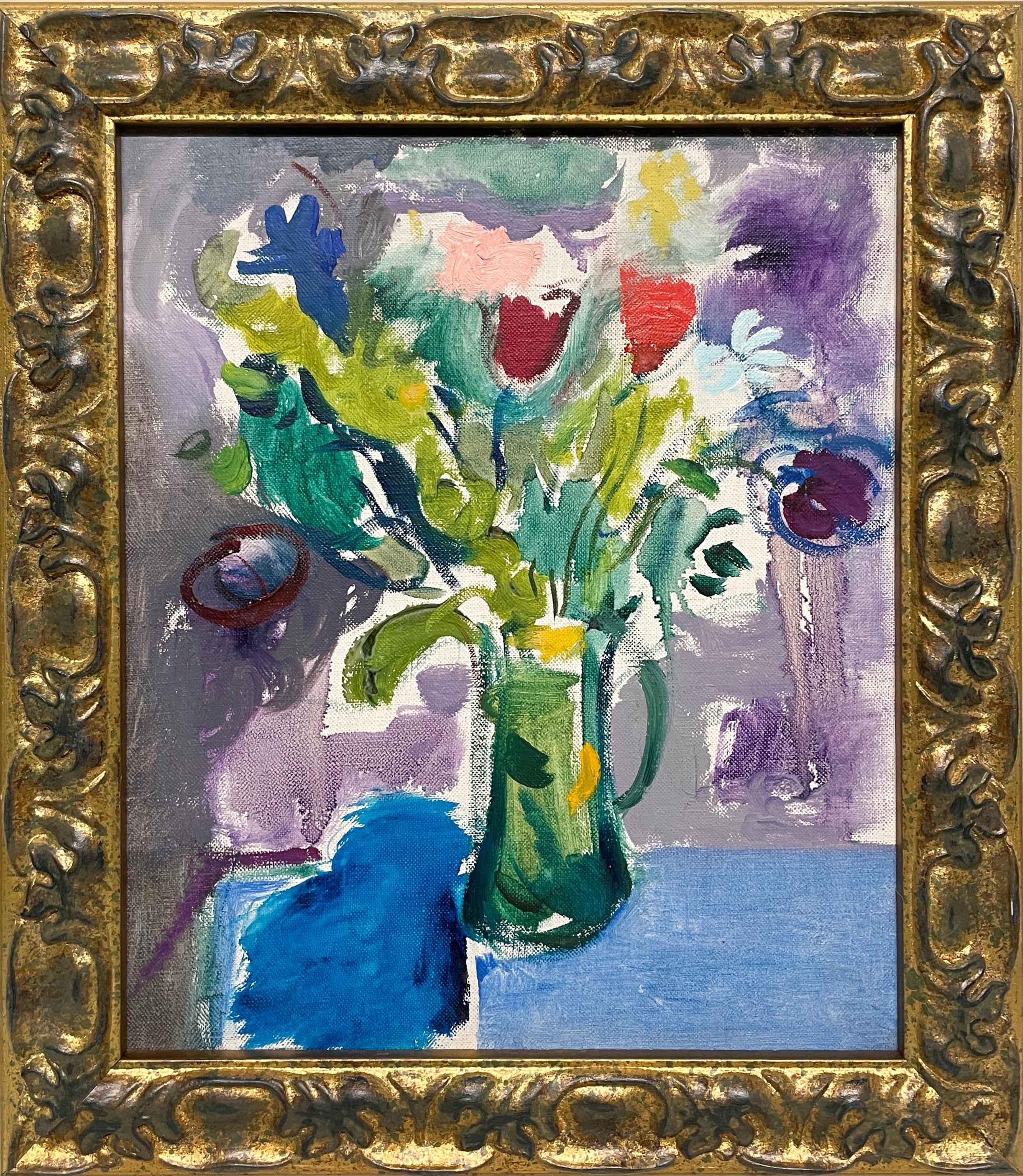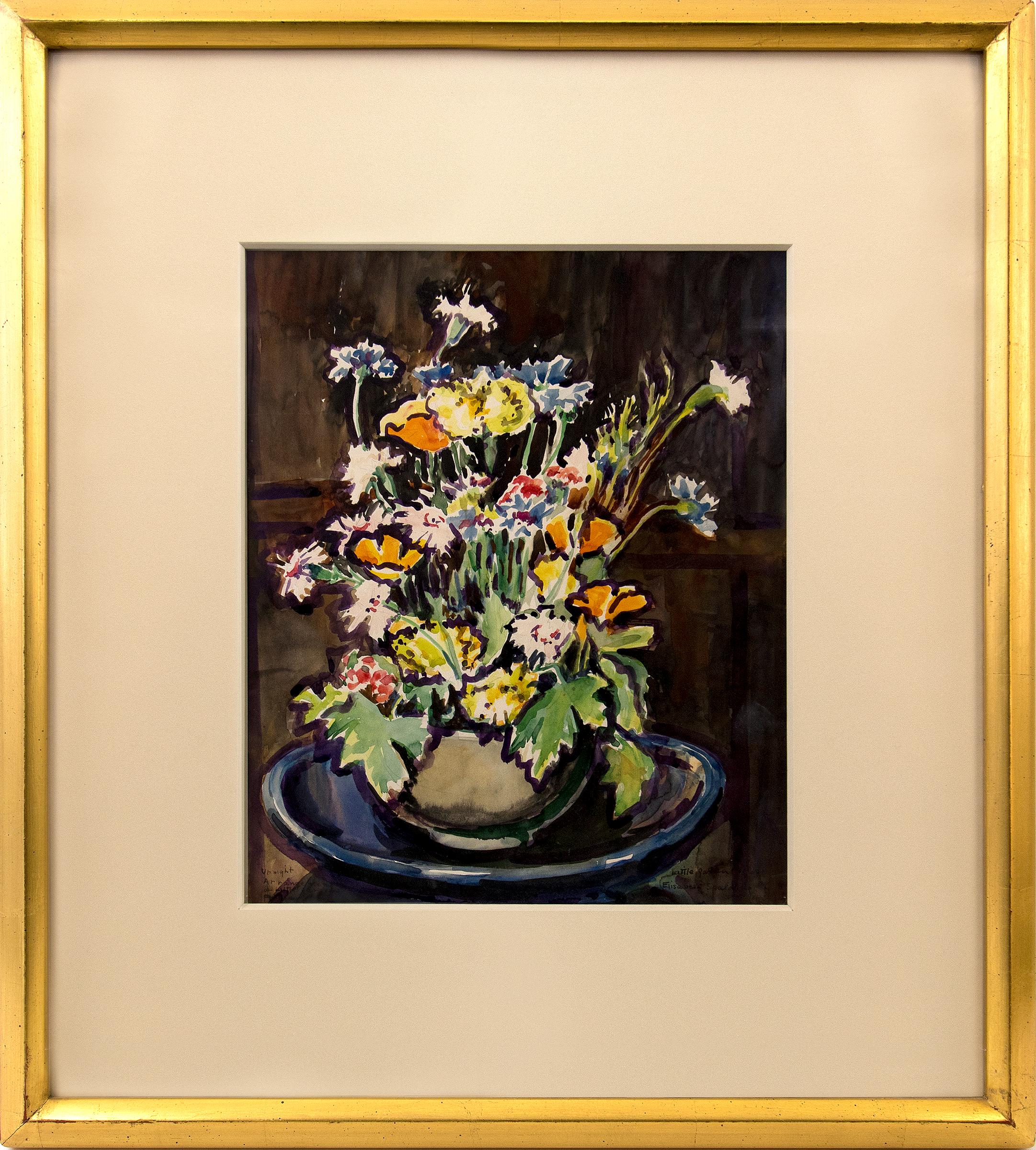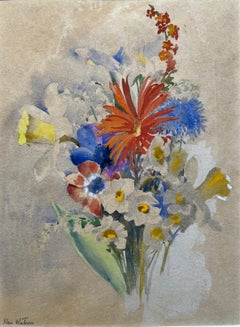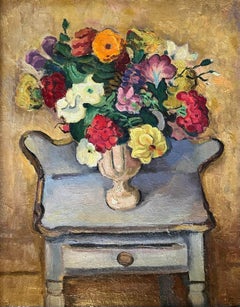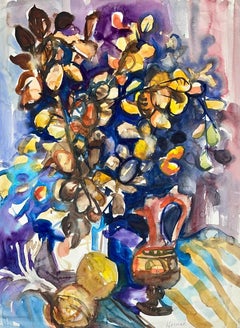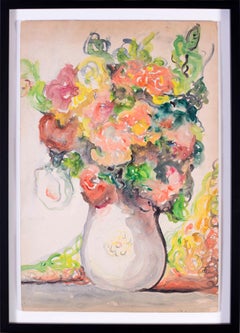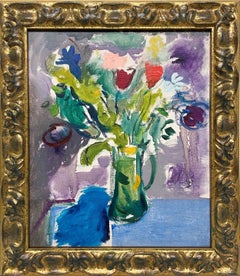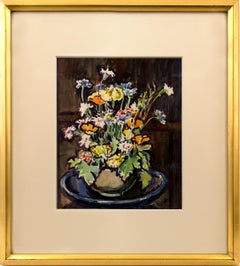Items Similar to Flowers Still Life
Want more images or videos?
Request additional images or videos from the seller
1 of 5
Edward Beatty RowanFlowers Still LifeCirca 1930s
Circa 1930s
$1,750
£1,322.78
€1,520.11
CA$2,436.86
A$2,710.91
CHF 1,421.09
MX$33,126.68
NOK 18,095.86
SEK 17,034.75
DKK 11,347.07
Shipping
Retrieving quote...The 1stDibs Promise:
Authenticity Guarantee,
Money-Back Guarantee,
24-Hour Cancellation
About the Item
(Note: This work is part of our exhibition Connected by Creativity: WPA Era Works from the Collection of Leata and Edward Beatty Rowan)
Watercolor on paper, 20 ½ x 16 inches unframed sheet, 27 ½ x 21 inches framed, but not glazed, inscribed “550 – 514” verso
About the Artist:
Edward Beatty Rowan was among the most significant and innovative thought leaders of the American art scene during the Great Depression. As an arts administrator, teacher, artist, writer, lecturer, critic, and gallerist, he helped define the look and feel of American art from the late 1920s through World War II. Rowan was born in Chicago, Illinois on March 11, 1898. By 1910, Rowan and his family had moved to Hamilton, Ohio, approximately twenty miles north of Cincinnati. Rowan graduated from Hamilton High School, served in the United States Army during World War I, and was honorably discharged as a private on December 21, 1918. He then attended Miami University in nearby Oxford, Ohio, where he met his wife, Leata Mae Peer, and graduated in 1921. In the mid-1920s, Rowan received a scholarship to attend Harvard University where he received a master’s degree in fine art. Following his graduation from Harvard, the Rowans founded the Little Gallery in Cedar Rapids, Iowa, with support from the Carnegie Foundation and the American Federation of Arts.
From that point forward, Edward Rowan was at the center of America’s most significant art communities and associated with many of the nation’s most important artists of the Depression Era. His keen eye and efficient administration of public works projects produced a prodigious legacy of murals in hundreds of post offices and other public spaces across the country. Through his work with the American Federation of Arts, Rowan curated and organized traveling exhibitions of paintings, drawings, sculptures, and watercolors, which toured the country, reaching small communities and providing important sources of exposure and income for artists.
Rowan was a tireless worker whose passion was to promote craftsmanship and art education to the masses. He was one of the rare individuals to pursue his passions at all levels. Rowan participated in the grassroots movement of his Little Gallery in Cedar Rapids and the Stone City Art Colony and served in Washington, D.C. as the New Deal's Assistant Technical Director of the Public Works of Art Project (PWAP) and an administrator of the Federal Emergency Relief Administration (FERA). Rowan also served as Superintendent of the Treasury Department’s Section of Painting and Sculpture (“Section of Fine Arts” or “the Section”) where he was responsible for doling out millions of dollars of taxpayer funds to beautify government buildings. In these roles, he was able to help define a narrative that attempted to glorify what was thought to be uniquely American.
Rowan was also an artist, who honed his skills while studying at Harvard in the late 1920s and serving at the Little Gallery and the Stone City Art Colony. Rowan was principally a watercolor painter of still lifes, landscapes, and birds. His style was a bold and expressive form of modernism. Rowan exhibited with the Iowa Artists Association at the Davenport Municipal Art Gallery and other venues around the state in the 1930s. His works are rarely seen and those which are known are from the early 1930s, presumably because his artistic output decreased as he assumed more responsibilities as an arts administrator. Rowan is listed in Who Was Who in American Art and all other standard references.
- Creator:Edward Beatty Rowan (1898 - 1946, American)
- Creation Year:Circa 1930s
- Dimensions:Height: 20.5 in (52.07 cm)Width: 16 in (40.64 cm)
- More Editions & Sizes:27.5 x 21 framed (but not glazed)Price: $1,750
- Medium:
- Movement & Style:
- Period:
- Condition:
- Gallery Location:Los Angeles, CA
- Reference Number:1stDibs: LU1859212570432
About the Seller
5.0
Vetted Professional Seller
Every seller passes strict standards for authenticity and reliability
1stDibs seller since 2022
15 sales on 1stDibs
Typical response time: <1 hour
- ShippingRetrieving quote...Shipping from: Los Angeles, CA
- Return Policy
Authenticity Guarantee
In the unlikely event there’s an issue with an item’s authenticity, contact us within 1 year for a full refund. DetailsMoney-Back Guarantee
If your item is not as described, is damaged in transit, or does not arrive, contact us within 7 days for a full refund. Details24-Hour Cancellation
You have a 24-hour grace period in which to reconsider your purchase, with no questions asked.Vetted Professional Sellers
Our world-class sellers must adhere to strict standards for service and quality, maintaining the integrity of our listings.Price-Match Guarantee
If you find that a seller listed the same item for a lower price elsewhere, we’ll match it.Trusted Global Delivery
Our best-in-class carrier network provides specialized shipping options worldwide, including custom delivery.More From This Seller
View AllFlower Bouquet
Located in Los Angeles, CA
(Note: This work is part of our exhibition Connected by Creativity: WPA Era Works from the Collection of Leata and Edward Beatty Rowan)
Watercolor on paper, 12 x 9 ½ inches unframed sheet, 15 x 12 ½ inches framed, signed lower left
About the Artist:
Nan Watson...
Category
1930s American Modern Still-life Drawings and Watercolors
Materials
Watercolor
Flower Still Life
By Adrian Dornbush
Located in Los Angeles, CA
(Note: This work is part of our exhibition Connected by Creativity: WPA Era Works from the Collection of Leata and Edward Beatty Rowan)
Oil on canvas, 24 ½ x 19 ½ inches unframed, 32 x 27 inches framed, signed and inscribed “Adrian Dornbush/ Flower Still Life” verso, a remnant of exhibition label verso, stamped “1454” verso, original frame
Exhibited:
i) Midwestern Artist’s Exhibition Representative Work from Missouri, Kansas, Oklahoma, Nebraska & Colorado, Kansas City Art Institute, February 1 to March 2, 1931, no. 34 (see catalog with a listing of work with this title); and ii) Special Display and Sale of Late Oil Paintings Produced by Cedar Rapids Own Artists from the Little Gallery, at Newman’s Department Store, Cedar Rapids, Iowa, March 1932 (see [Advertisement], The Gazette (Cedar Rapids, Iowa), March 15, 1932 – listing a work with this title, together with paintings by fourteen other artists, including Grant Wood, Marvin Cone...
Category
1930s American Modern Still-life Paintings
Materials
Oil
Still Life (Untitled)
Located in Los Angeles, CA
Still Life (Untitled), c. 1940/50s, oil on canvas, 25 x 30 inches, identified by label verso
Jeanette Maxfield Lewis was a California-based landscape painter and etcher. Born in Oa...
Category
1940s American Modern Still-life Paintings
Materials
Canvas, Oil
Wind Flowers in a Tzu Chow Vase
By Ethelyn Cosby Stewart
Located in Los Angeles, CA
Wind Flowers in a Tzu Chow Vase, 1933, oil on canvas board, signed and dated lower right, 20 x 16 inches, label verso with title and original price ($185.00), exhibited 44th Annual E...
Category
1930s American Modern Still-life Paintings
Materials
Canvas, Oil, Board
Still Life (Untitled)
Located in Los Angeles, CA
Still Life (Untitled), c. 1935 – 1940, oil on canvas, signed lower left, magazine cover has a 1934 date, 32 x 26 inches, remnant of exhibition label verso
In their essay for the gro...
Category
1930s American Modern Still-life Paintings
Materials
Canvas, Oil
Magnolia
By Edna Reindel
Located in Los Angeles, CA
Magnolia, c. 1946, oil on canvas, signed lower left, 22 3/4 x 25 3/4 inches, this original oil painting was part of Reindel's Flowers of Our Land series, commissioned by the John M...
Category
1940s American Modern Still-life Paintings
Materials
Canvas, Board
You May Also Like
Untitled (Abstract Still Life with Flowers), 1963, Ian Hornak — Painting
By Ian Hornak
Located in Fairfield, CT
Artist: Ian Hornak (1944-2002)
Title: Untitled (Abstract Still Life with Flowers)
Year: circa 1963
Medium: Acrylic on double layered Masonite
Size: 29.5 x 21 inches
Condition: Good
P...
Category
1960s Photorealist Interior Drawings and Watercolors
Materials
Watercolor, Archival Paper
$2,600 Sale Price
20% Off
British Mid 20th Century watercolour on board still life painting of flowers
By Derrick Latimer Sayer
Located in Petworth, West Sussex
Derrick Latimer Sayer (British, 1917 – 1992)
A vase of summer blooms
Watercolour on board
24.3/4 x 16.3/4 in. (60.3 x 42.5 cm.)
Sayer studied at the Chelsea School Art under Henry Mo...
Category
20th Century Expressionist Still-life Drawings and Watercolors
Materials
Watercolor, Board
A Lively, 1950s Mid-Century Modern Floral Still Life Painting by Francis Chapin
By Francis Chapin
Located in Chicago, IL
A Lively, Colorful 1950s Mid-Century Modern Floral Still Life Painting by Notable Chicago Artist, Francis Chapin (Am. 1899-1965). Full of color, with wonderful brushwork, the painti...
Category
Mid-20th Century American Modern Still-life Paintings
Materials
Canvas, Oil, Board
Little Garden Flowers, 20th Century Still Life Watercolor Painting of Interior
By Elisabeth Spalding
Located in Denver, CO
This exquisite watercolor, titled "Little Garden Flowers (Still Life)", by renowned artist Elisabeth Spalding (1868-1954), beautifully captures a delicate arrangement of flowers in v...
Category
20th Century Impressionist Still-life Drawings and Watercolors
Materials
Watercolor
$1,450 Sale Price
55% Off
Floral Still Life
Located in Bryn Mawr, PA
Alfred Maurer was born in 1868 in New York City, the son of Louis Maurer, a commercial artist for Currier and Ives. He worked in the family lithographic business as a young man and a...
Category
20th Century American Modern Still-life Paintings
Materials
Gouache
Abstracted Still Life with Flowers
By Les Anderson
Located in Soquel, CA
Abstracted still life by Les Anderson (American, 1928-2009). Unsigned, but was acquired from the estate of Les Anderson in Monterey, California. No frame. Image size: 20"H x 14"W.
L...
Category
1980s American Impressionist Still-life Drawings and Watercolors
Materials
Paper, Watercolor
